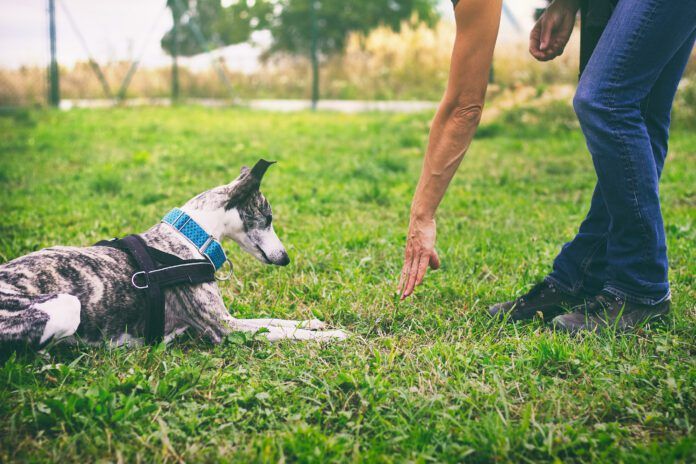A study published in PLOS One on August 28 proved that dogs can recognize, comprehend, and respond to words from soundboards. The results open up a world of opportunities for expanding our ability to communicate with our dogs.
The researchers, from the University of California at San Diego, put together a carefully constructed study to determine if dogs can understand words like “play” and “outside” when the words come from a soundboard without any other clues. (In case you weren’t aware, canine talking buttons, or soundboards, are hot right now!) And, yes, the dogs in the study clearly demonstrated that they understood what the word meant.
Before your skeptical brain starts to think, “Well, sure, my dog knows what ‘sit’ means,” you should know that the researchers worked hard to ensure there were no other things involved, like the all-important aspect of body language (more on that below). And the researchers used two similar studies, both involving the same strict parameters and methods, to reach their conclusion. One of the studies was done by the researchers and the other by “citizen scientists” at home.
“This study addresses public skepticism about whether dogs truly understand what the buttons mean,” says Federico Rossano in an an interview on Science Daily. “Our findings are important because they show that words matter to dogs, and that they respond to the words themselves, not just to associated cues.” Rossano is a cognitive science associate professor at UC San Diego, the head of the Comparative Cognition Lab, and one of the study authors. (You may have seen Rossano on Netflix in “Inside the Mind of a Dog.”)
“Pet dogs can be successfully taught by their owners to associate words recorded onto soundboard buttons to their outcomes in the real world,” wrote the researchers, “and they respond appropriately to these words even when they are presented in the absence of any other cues, such as the owner’s body language.”
What about body language? In a 2017 study from the University of Naples, researchers proved that dogs respond to both words and body language. They determined that the fastest reactions were when both methods of communication were used at the same time. Not surprising. What’s fascinating, though, is that the researchers learned that if the dogs received conflicting information (as in the body language indicated one thing and the words something else), the dogs responded to the cue from the body language. In a nutshell, if your dog isn’t sure what you mean, he is going to follow the communication from your body. This is huge information for anyone who trains dogs!
The body language aspect is also why it was important in the soundboard study that the researchers ensured no physical cues were used. The researchers hope to expand the study to determine if dogs and humans can have “two-way interspecies communication” using the soundboard. I find the idea exciting—and maybe just a little scary.
I can testify that my agility dogs are very verbal, and I use a lot of words when training. One of the first things the dogs figure out is that “Yes!” means they did something right and a treat is headed their way. And heaven knows that my baby dog is aware that “hush,” even shouted from across the room, means stop barking. (Thank goodness, as she does like to bark.) I’m a little concerned, though, if I give them access to a soundboard what words they may choose to share with me.






